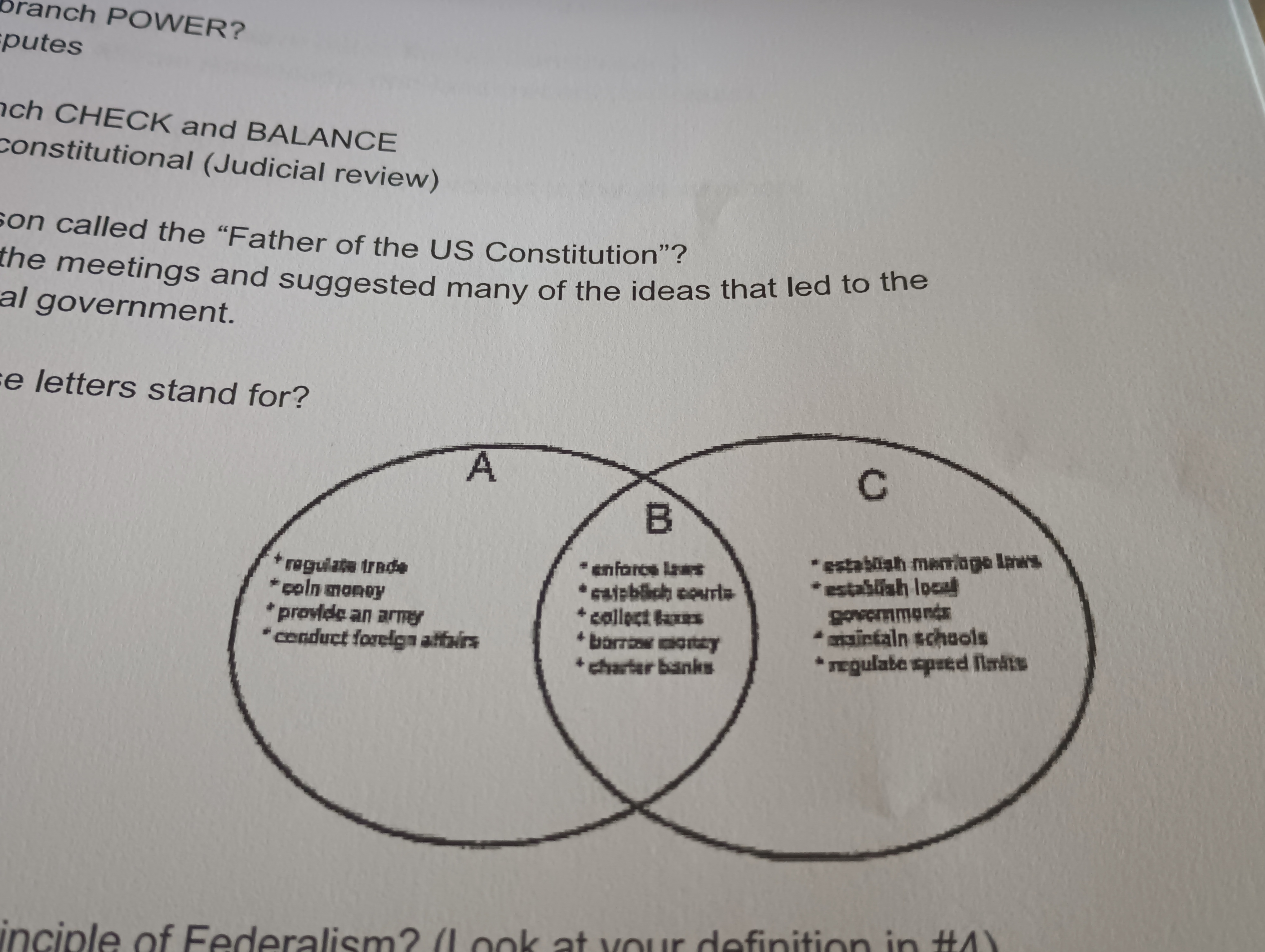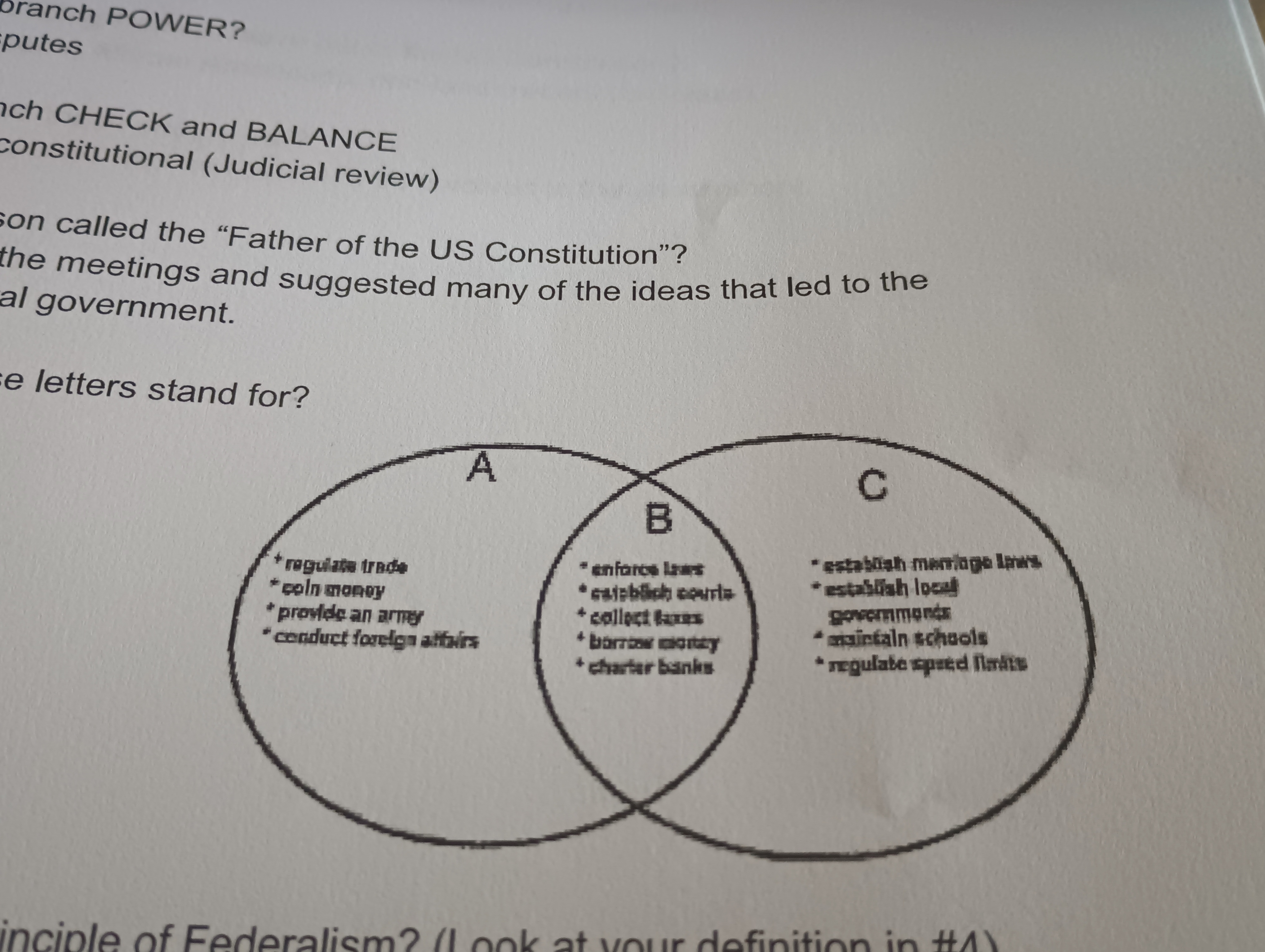Creating the Constitution 1776 to 1790
1/43
There's no tags or description
Looks like no tags are added yet.
Name | Mastery | Learn | Test | Matching | Spaced |
|---|
No study sessions yet.
44 Terms
Define constitution
the document in which the law, principles, organization, and processes of government are stable.
Three reasons the Article of Confederation was a weak form of government.
Congress had no power to tax citizens
no courts to settle disputes between states
Congress had no power to raise an army
Why would the founding fathers have created such a weak central government?
Fear of a government with too much power like Great Britain.
A brief description of Shay's Rebellion:
After the war, taxes were high and people couldn't pay their mortgage, so they lost their homes. Shay men closed courts to prevent foreclosures. The rebellion was put to an end, but the federal government couldn't help.
What was the outcome of the Rebellion?
People realized that the Articles of Confederation was too weak.
What was the main reason for the Constitutional Convention of 1787?
To revise the Articles of Confederation.
Define compromise
giving up to gain something.
What is the Great Compromise
Bi- cameral- House of Representatives based on population and the Senate will have 2 representatives from each state.
What problem did the Great Compromise solve?
How States should be represented.
What is the 3/5 Compromise
North v. South - Every 5 slaves count as 3 people.
What problem did the 3/5 compromise solve?
How to count slave populations for representation and taxes.
What is the Electoral Compromise?
Electoral college- indirect election of president.
What problem did the Electoral Compromise solve?
Common people should vote. Can't be a rich man's government.
Separation of powers-
Separating the government into 3 branches so no one branch has too much power.
Checks and Balances
The ability of one branch of government to limit the powers of another branch of government.
Federalism
Sharing of power between the states and the Federal government.
Judicial Review
The belief in which the legislative and executive actions are subject to review (Supreme court can declare laws unconstitutional)
Executive Branch Main Job (function)
enforce laws
Who is in the executive branch?
President, Vice President, Cabinet
executive branch power
Make treaties, pick cabinet members and Supreme Court judge
Example of executive branch CHECKS and BALANCE
veto bills
Legislative Branch Main Job (function)
make laws
Example of a legislative branch POWER?
Propose laws, declare war
Who/What is in legislative the branch?
House of Representatives and Senate
Example of legislative branch CHECK and BALANCE
Override veto with 2/3rds vote
Judicial Branch Main Job (function)
Interpret laws
Who/What is in the judicial branch?
U.S. Supreme Court
Example of a judicial branch POWER?
Settle state disputes
Example of judicial branch CHECK and BALANCE
Declare laws unconstitutional (Judicial review)
Why was James Madison called the “Father of the US Constitution”?
He kept detailed notes of the meetings and suggested many of the ideas that led to the formation of a strong central government.

What should each of these letters stand for?
a. Federal powers
b. Shared powers
c. State powers


How does this chart show the principle of Federalism?
The Venn diagram shows the States and Federal government have separate powers and shared powers.

Define: Ratification
act of approving
List ONE argument in FAVOR of the US Constitution.
Articles too weak, checks and balances, add Bill of Rights
List ONE argument AGAINST of the US Constitution.
Federal government is too strong, No Bill of Rights, States losing power, Congress can make states pay taxes.
Define: Bill of Rights-
A written list of freedoms that a government promises to protect
Why were the Bill of Rights added to the US Constitution?
Anti-Federalists insisted or their states wouldn’t ratify the Bill of Rights
. Define: Amendment-
Revision or an addition to a bill, law or constitution
. Why did the Founding Fathers include the amendment process in the US Constitution?
To improve or change the Constitution when needed (living document).
Who did the Founding Fathers leave out of the US Constitution?
Women, Native Americans, African Americans, non-land owners (low class).
Why did the founding fathers leave Women, Native Americans, African Americans, non-land owners (low class). out of the us constitution?
They felt that these groups had no reason to be involved in the government.
Who is the Commander in Chief of the US armed forces
The president
Who kept notes at the constitutional convention of 1787
James Madison
Who was Daniel Shay
He led shay’s rebellion and was a revolutionary war vet